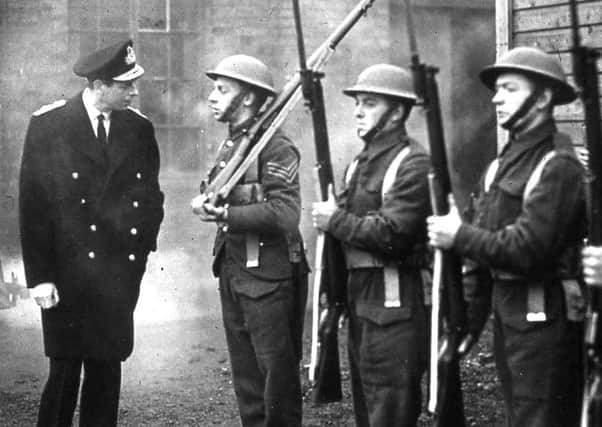Drilled and armed but they never fired a shot in anger


As well as providing great entertainment, the comic capers of the Walmington-on-Sea platoon are a reminder that every town and village in the land had its own band of intrepid warriors who gave up their leisure hours to prepare for what just might come our way if there was an invasion.
When war broke out in September 1939 it was assumed that the country would be subject to a massive air bombardment and so black-outs, air raid shelters and mountains of sandbags were prepared.
Advertisement
Hide AdAdvertisement
Hide AdBut it didn’t happen and thoughts soon turned to defending the homeland from invading enemy forces.
It is hard to believe now but everyone was convinced that it was only a matter of time until the tanks rolled along the Callendar Road and that the prelude to this would be the arrival of parachutists bent on seizing key places like power stations, docks, airfields and railways.
On May 14, 1940, the Government announced the formation of Local Defence Volunteer Corps and invited men between the ages of 17 and 65 to register at police stations for voluntary unpaid service.
Old soldiers from the Great War along with miners and munitions workers who were exempt from military service answered the call and in Falkirk district hundreds came forward.
Advertisement
Hide AdAdvertisement
Hide AdLeading men with previous service or status in the community were appointed to command positions: Rev. James Thomson, minister of Larbert Old who had won the Military Cross in 1918 formed a Larbert platoon and later commanded the Third Stirlingshire Battalion; Colonel Alan Stein – a decorated veteran and TA commander – formed a platoon in Brightons and went on to lead the Second Stirlingshire Battalion and Major John Farrell, headmaster of St Francis’ School took charge in Falkirk.
There were platoons established by foundries, mines and factories as well as in most villages and suburbs and in July the name Home Guard was adopted.
It was expected that the enemy would land at night and so from the outset the Home Guard was ordered to watch from ‘‘dusk to dawn’ guarding key road and rail junctions, setting up road blocks and watching the sky from church towers.
Uniforms varied in style and quality and weapons were in short supply with many relying on pikes made by local blacksmiths, Molotov cocktails, shotguns or souvenir pistols from earlier conflicts.
Advertisement
Hide AdAdvertisement
Hide AdEven an old machine gun in the Dollar Park museum was requisitioned.
Later on weapons became more plentiful and sophisticated so that by 1944 the force was very well armed and certainly well drilled!
We can still see the odd reminder of their activities such as the gun loops in Polmont Old churchyard intended to defend against the paratroopers heading for Grangemouth aerodrome.
Much time was spent in exercises to prepare them for the invasion that never came and there are many great stories to rival the escapades of Corporal Jones and company.
Advertisement
Hide AdAdvertisement
Hide AdBy the time of the allied invasion of Europe in June 1944 it was clear that the homeland was safe and in October the Home Guard was disbanded.
Despite the lack of real action and the strain of working by day and marching by night there was genuine regret at the ending of what was a great demonstration of unselfish service to home and hearth.
There cannot be many of these old soldiers left now but Geoff Bailey’s excellent 2008 book ‘‘Hard as Nails’’ records their story.